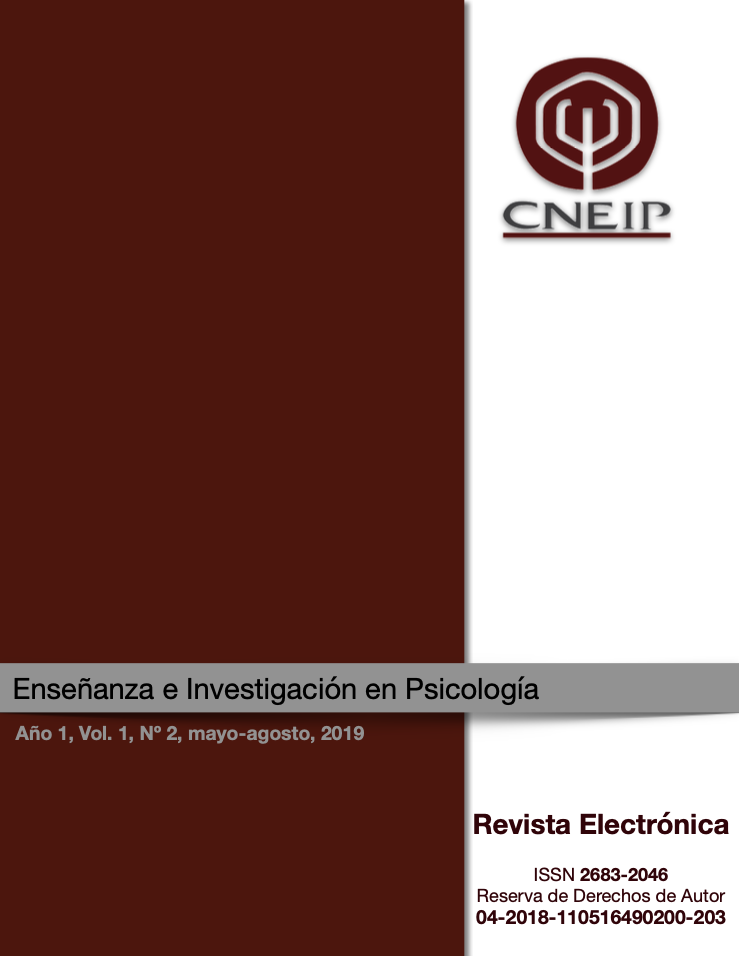Resumen
En el presente estudio se empleó un diseño de comparación estática, con pretest y postest, para evaluar la eficacia de un programa basado en el desarrollo de habilidades para la vida destinado a disminuir el consumo de tabaco, alcohol y drogas en estudiantes universitarios y de nivel medio superior. Dicho programa consistió en capacitar a docentes y líderes juveniles para desarrollar habilidades para la vida, identificadas por la Organización Panamericana de la Salud. Una vez terminada la capacitación, los individuos capacitados pusieron en práctica los programas de prevención en los escenarios de interés. Los resultados mostraron que, si bien casi todas esas habilidades aumentaron significativamente en el postest, el consumo de las tres drogas de interés no cesó de acrecentarse. Los autores sugieren que un programa de desarrollo de habilidades para la vida no tiene efectos importantes en el consumo de sustancias adictivas, y sugieren además que se requiere de otro tipo de programas en los escenarios muestreados.
Referencias
Alonso C., M.S., Esparza, K., Frederickson, F., Guzmán, K., López, K. y Martínez, R. (2008). Efecto de
una intervención para prevenir el consumo de alcohol en adolescentes de escuelas secundarias de
Monterrey, México. Investigación en Enfermería: Imagen y Desarrollo, 10, 79-92.
Baron, R. (1997). BarOn Emotional Quotient Inventory. Technical manual. Toronto: Multi-Health
Systems Inc.
Botvin, G.I. (2000). Life skills training students guide. Level 1 (Middle school). White Plains, NY:
Princeton Health Press.
Botvin, G.J., Baker, E., Dusenbury, L., Botvin, E.M. y Diaz, T. (1995). Long-term follow-up results of
a randomized drug abuse prevention trial in a White middle-class population. Journal of the American
Medical Association, 273, 1106-1112. doi: 10.1001/jama.1995.03520380042033.
Botvin, G.J. y Griffin, K.W. (2004). Life skills training: Empirical findings and future directions. Journal of
Primary Prevention, 25, 211-232.
Castro, L. (1975). Diseño experimental sin estadística. México: Trillas.
Consejo Nacional Contra las Adicciones. (2003). Modelos preventivos. México: Conadic- Secretaría de Salud.
Darden, C.A., Gazda, G.M. y Ginter, E.J. (1996). Life skills and mental health counseling. Journal of
Mental Health Counseling, 18, 134-141.
De Vries, S., Verheij, R., Groenewegen, P. y Spreeuwenberg, P. (2003). Natural environments-
healthy environments? An explanatory analysis of the the relationship between green space and
health. Environment and Planning, 35, 1717-1731.
Díaz-Guerrero, R. (2003). Bajo las garras de la cultura. México: Trillas.
Engels, R., Knibbe, R.A. y Drop, M.J. (1999). Why do late adolescents drink at home? A study on the
psychological well-being, social integration and drinking context. Addiction Research, 7, 31-46. doi:
10.3109/16066359909004373.
EuroQol Group (1990). EuroQol-a new facility for the measurement of health-related quality of life.
Health Policy, 16, 199-208.
Fagerström, K.O. (1978). Measuring the degree of physical dependence to tobacco smoking with
reference to individualization of treatment. Addictive Behaviors, 3, 235-241.
Fergusson, D.M. y Boden, J.M. (2008). Cannabis and later life outcomes. Addiction, 10, 969-976. doi:
10.1111/j.1360-0443.2008.02221.x
Griffin, K., Botvin, G., Nichols, T. y Doyle, M. (2003). Effectiveness of a universal drug abuse prevention
program for youth at risk for substance abuse initiation. Prevention Medicine, 36, 1-7. doi: 10.1006/
pmed.2002.1133
Hanewinkel, R. y Asshauer, M. (2004). Fifteen-month follow-up results of a school-based life-skills
approach to smoking. Prevention, Health & Education Research, 19, 152-157.
Hawkins, J.D., Catalano, R.F. y Miller J.Y. (1992). Risk and protective factors for alcohol and other drug
problems in adolescence and early adulthood: Implications for substance abuse prevention. Psychologi-
cal Bulletin, 112, 64-105.
Hernández E., M. (2015). Evaluación de un programa de prevención del consumo de sustancias
psicoactivas para la infancia. Health and Addictions, 15, 67-78.
Jolliffe, D. y Farrington, D.P. (2006). Development and validation of the Basic Empathy Scale. Journal of
Adolescence, 29, 589-611. doi: 10.1016/j.adolescence.2005.08.010.
Larimer, M.E. y Cronce, J.M. (2002). Identification, prevention and treatment: A review of individual-
focused strategies to reduce problematic alcohol consumption by college students. Journal of Studies on
Alcohol (Supplement), 14, 148-163.
Laudet, A. (2011). The case for considering quality of life in addiction research and clinical practice.
Addiction Science and Clinical Practice, 6, 44-55.
Legleye, S., Piontek, D. y Kraus, L. (2011). Psychometric properties of the Cannabis Abuse Screening
Test (CAST) in a French sample of adolescents. Drug and Alcohol Dependence, 113, 229-235. doi.
10.1016/j.drugalcdep.2010.08.011.
Legleye S., Piontek D., Kraus, L., Morand, E. y Falissard, B. (2013). A validation of the Cannabis
Abuse Screening Test (CAST) using a latent class analysis of the DSM-IV among adolescents.
International Journal of Methods in Psychatric Research, 22, 16-26. doi: 10.1002/mpr.13.
Levy, R. y Carella, L. (2001). What makes a school-based drug abuse prevention program effective? The
importance of skills-based provider training. Paper presented at Annual Meeting of the American
Public Health Association, Atlanta, GA, October 21-25.
Lozano, O.M., Rojas, A.J., Pérez, C., González S., F., Ballesta, R. e Izaskum, R. (2008). Evidencias de
validez del test para la evaluación de la calidad de vida en adictos a sustancias psicoactivas a partir del
modelo biaxial de la adicción. Psicothema, 20, 317-323.
Luna A., Carrasco, G. y Del Mar, R.G. (2013). Evaluation of the effectiveness of a smoking prevention
program based on the 'Life Skills Training' approach. Health Education Research, 28, 673-682.
Mangrulkar, L., Whitman, C.V. y Posner, M. (2001). Enfoque de habilidades para la vida para un
desarrollo saludable de niños y adolescentes. Washington, D.C.: Organización Panamericana de la
Salud.
Martínez, E., Sierra, D., Jaimes, J., Claro, A. y Cendales, R. (2012). Experiencia de consumo de alcohol
y cigarrillo y su relación con la percepción de riesgo en niños y jóvenes escolares de colegios privados
de Bogotá. Típica: Boletín Electrónico de Salud Escolar, 8, 56-67.
McKay, J.R. y Weiss, R.V. (2001). A review of temporal effects and outcome predictors in substance abuse
treatment studies with long-term follow-ups: Preliminary results and methodological issues. Evaluation
Review, 25, 113-161. doi: 10.1177/0193841X0102500202.
Moshki, M., Hassanzade, T. y Teimouri, P. (2014). Effects of life skills training on drug abuse preventive
behaviors among university students. International. Journal of Preventive Medicine, 5, 577-583.
Moskowitz, J.M. (1989). The primary prevention of alcohol problems: A critical review of the research
literature. Journal of Studies on Alcohol, 50, 54-88. doi: 10.15288/jsa.1989.50.54.
Oliva, A., Antolín, L., Pertegal, M.A., Ríos, M. y Parra, A. (2009). Instrumentos para la evaluación
de la salud mental y el desarrollo positivo adolescente y los activos que lo promueven. Sevilla:
Junta de Andalucía.
Petratis, J., Flay, B. y Miller, T. (1995). Reviewing theories of adolescent substance use: organizing pieces
in the puzzle. Psychological Bulletin, 117, 67-86. doi: 10.1037/0033-2909.117.1.67.
Pulido, M.A., Aguilar, M., García, M., Guillot, C., Morales, J.A., Moreno, P., Moranchel, J.A., Porti-
lla, D., Rodríguez, P., Rodríguez, G. y Sosa, J. (2015). Variables ecológicas y consumo de sustancias
adictivas en universitarios de la Ciudad de México: historia de dos universidades. Revista Intercontinental
de Psicología y Educación, 17, 31-55.
Pulido, M.A., Almaraz, D., García, D. y Martínez, L. (2010). Ten years of research on letter string
problem solving by analogical transfer. Journal of Behavior Health and Social Issues, 2, 83-89.
Robertson, E.B., Sloboda, Z., Boyd, G.M., Beatty, L. Kozel y Nicholas, J. (Eds.) (1997). Rural
substance abuse: State of knowledge and issues. NIDA Research Monograph 168. Disponible en
http://www.nida.nih.gov/PDF/Monographs/Monograph168/Download 168.html.
Rodríguez S., E., Díaz, D., Gutiérrez S., E., Guerrero J., A. y Gómez E., L. (2011) Evaluación de un
programa de prevención del consumo de drogas para adolescentes. Salud Mental, 34, 27-35.
Secretaría de Salud e Instituto Nacional de Estadística y Geografía (2016). Encuesta Nacional de Adicciones
(ENCODAT). México: Autores.
Skara, S. y Sussman, S. (2003). A review of 25 long-term adolescent tobacco and other drug use
prevention program evaluations. Preventive Medicine, 37, 451-474.
Spreng, R.N., Mckinnon, M.C., Mar, R.A. y Levine, B. (2009). The Toronto Empathy Questionnaire:
Scale development and initial validation of a factor-analytic solution to multiple empathy measures.
Journal of Personality Assessment, 91, 62-71. doi: 10.1080/00223890802484381.
Thorndike, E.L. (1911). Animal intelligence: Experimental studies. New York: MacMillan.
Tobler, N.S, Roona, M.R. y Ochshorn, P. (2000). School-based adolescent drug prevention programs:
1998 meta-analysis. Journal of Primary Prevention, 20, 275-336.
Tobler, N. y Stratton, H. (1997). Effectiveness of school based drug prevention programs: a meta-analysis
of the research. Journal of Primary Prevention, 18, 71-128. doi: 10.1177/0143034399201008.
Tobler, N.S. (1986). Meta-analysis of 143 adolescent drug preventive programs: Quantitative outcome
results of program participants compared to a control or comparison group. Journal of Drug Issues, 61,
537-567. doi: 10.1177/002204268601600405.
Tobler, W. (1992). Drug prevention programs can work: research findings. Journal of Addictive Diseases, 11,
1-28. doi: 10.1300/J069v11n03_01.
Uribe, A., Verdugo, L. y Zacarías, S. (2011). Relación entre percepción de riesgo y consumo de drogas
en estudiantes de bachillerato. Psicología y Salud, 21, 47-55.
Volkow, N.D., Baler, R.D., Compton, W.M. y Weiss, P. (2014). Adverse health effects of marijuana use.
The New England Journal of Medicine, 5, 370, 2219-2227. doi: 10.1056/NEJMra1402309.
Wagenaar, A.C., Tobler, A.I. y Komro, K.A. (2010). Effects of tax and price polices on mobility and
mortality: A systematic review. American Journal of Public Health, 100, 2270-2278. doi: 10.2105/AJPH.
2009.186007.
Webster-Stratton, C., Reid, M.J. y Hammond, M. (2001). Social skills and problem-solving training for
children with early-onset conduct problems: Who benefits? Journal of Child Psychology and Psychiatry, 42,
943-952.
World Health Organization (1989). The Alcohol Use Disorders Identification Test (AUDIT). Geneve: Author.
Disponible en https://www.drugabuse.gov/sites/default/files/files/AUDIT.pdf.

Esta obra está bajo una licencia internacional Creative Commons Atribución-NoComercial-SinDerivadas 4.0.
Derechos de autor 2019 Revista Enseñanza e Investigación en Psicología





